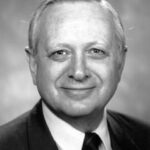Once upon a time, last fall to be exact, the credit markets seized up. In other times, like the early 1930s, this happened when the growth in the money supply was brought to a halt by monetary authorities. This time, the balance sheets of the banks and other financial institutions were full of toxic assets, mainly subprime mortgage securities. This made banks vulnerable to insolvency if they continued to lend. The brakes were fully engaged, especially at the large investment banks, and the velocity of money slowed substantially.
To counteract the freezing of credit, the Fed under Chairman Ben Bernanke increased the money supply. From March to June 2009, the M1 money supply (currency plus traveler’s checks plus demand deposits plus other checkable deposits) increased at an annualized rate of more than 22 percent. In contrast, the sum of revolving and nonrevolving credit declined at an annualized rate of 3.5 percent in the first quarter of 2009 and declined at 7.3 percent, 7.8 percent, and 1.5 percent in March, April, and May of 2009, respectively. Clearly, accelerated monetary growth by the Fed has not loosened the credit market, at least not yet. Apparently, the infusion of funds from the troubled asset relief program (TARP) into financial institutions is not yet working either.
Of course, the credit market will eventually loosen up. In anticipation of this event, Chairman Bernanke has laid out an exit strategy: The Fed will be using the authority Congress gave it in the fall of 2008 to pay member banks interest on required and excess reserves. The Fed also has a strategy to reduce reserves in case the interest program overshoots its targets.
The Fed currently pays 0.25 percent on reserves. When the time comes to tighten monetary policy, the Fed will raise the rate paid on reserve balances in line with the target for the federal funds rate, according to Chairman Bernanke. This will occur as inflationary expectations from the huge infusion of TARP funds are incorporated into the interest rates. Thus, the choice banks face right now is (1) buy a risk-free bond whose interest payments will keep pace with inflation or (2) loan to business at a fixed rate in a very uncertain market with serious credit risk problems. The better choice for the banks is to park their meager funds at the Fed rather than climb out on a limb to fund the recovery in the private sector. This will aggravate the frozen credit market.
Some might argue that the short-term interest rate is close to zero, and therefore paying interest on reserves will cause only a minor disturbance. That position ignores the psychological effect the policy has on the size of the reserves held by banks at the Fed. The signal the Fed is sending to the banks is that they should increase their excess reserves.
A similar policy was instituted in 1936 at the point when the recovery from the depths of the Great Depression was underway. The Federal Reserve observed that banks were holding more than twice the required level of reserves. Given the authority under the Banking Act of 1935, the Fed doubled the reserve requirement on member banks between August 15, 1936 and May 1, 1937.
The feeling was that doubling the reserve requirement would generate an increase in public confidence in banks, spur savings, and boost lending by the banks. However, the banks responded to the Fed’s signal by sharply reducing their lending and increasing their already-sufficient reserves. The result was a deflationary shock in mid-summer of 1937 and a subsequent sharp downturn in U.S. economic activity, according to Milton Friedman and Anna Jacobson Schwartz in their seminal history of monetary policy in the United States.
The current recovery would benefit greatly if the Fed were to restudy the experience of the 1937-38 depression and abandon its policy of paying interest on reserves. Indeed, Congress could consider rescinding the authority given to the Fed.
After all, it is never too late to stop making a mistake.
Jim Johnston ([email protected]) is an economic advisor to The Heartland Institute.




